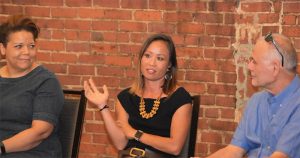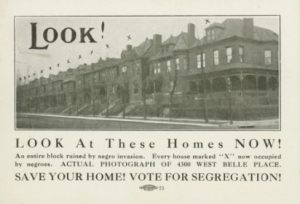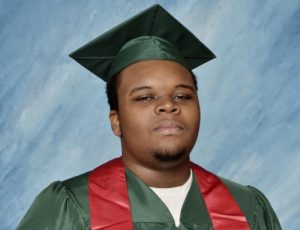
Research led by Mai Nguyen
Since summer 2016, my students and I have conducted archival, historical, and qualitative research on St. Louis to better understand the human hardships caused by housing law, planning, and policies, including racial zoning, racial covenants, and redlining. We analyzed historic and contemporary texts, pictures, maps, plans, newspaper articles, films, and sound recordings. In addition, we traveled to St. Louis in June and October of 2017 and interviewed activists, artists, and residents of Ferguson to better understand contemporary perspectives on the city.
St. Louis, Missouri has been the backdrop to some of America’s most relevant landmark civil rights cases, including Dred Scott and Shelley v. Kraemer. Today, the civil unrest resulting from the death of Mike Brown Jr. in 2014 and the Jason Stokely acquittal has made the city ground zero for the “New Civil Rights” movement. Once the fourth largest city in the country, St. Louis was the intersection of commerce, trade, and migration – it was considered the “upSouth”—the first stopping point for African-Americans looking for work in northern industrial cities. It was a bustling city with ragtime music, alcohol, and gambling. Its architectural grandeur is influenced by old Europe, particularly the French Colonial style.
 We bookend our story arc with two Fergusons, starting with the Plessy v. Ferguson Supreme Court ruling in 1896 that deemed “separate but equal” constitutional and ending with the recent events surrounding the shooting of Michael Brown by a police officer in Ferguson, Missouri. “In the Shadow of Ferguson” will also personify the socio-historical-political processes that institutionalized racism and inequality, documenting 100 years of critical events related to housing.
We bookend our story arc with two Fergusons, starting with the Plessy v. Ferguson Supreme Court ruling in 1896 that deemed “separate but equal” constitutional and ending with the recent events surrounding the shooting of Michael Brown by a police officer in Ferguson, Missouri. “In the Shadow of Ferguson” will also personify the socio-historical-political processes that institutionalized racism and inequality, documenting 100 years of critical events related to housing.
 The multimedia performance resulting from our research is comprised of music, imagery, acting, and spoken word. The performance runs approximately 60 minutes. After the performance, we opened up the discussion to include the audience, performers, and producers. We envision the performance as a launching pad for a rich discussion about institutional racism in US cities.
The multimedia performance resulting from our research is comprised of music, imagery, acting, and spoken word. The performance runs approximately 60 minutes. After the performance, we opened up the discussion to include the audience, performers, and producers. We envision the performance as a launching pad for a rich discussion about institutional racism in US cities.